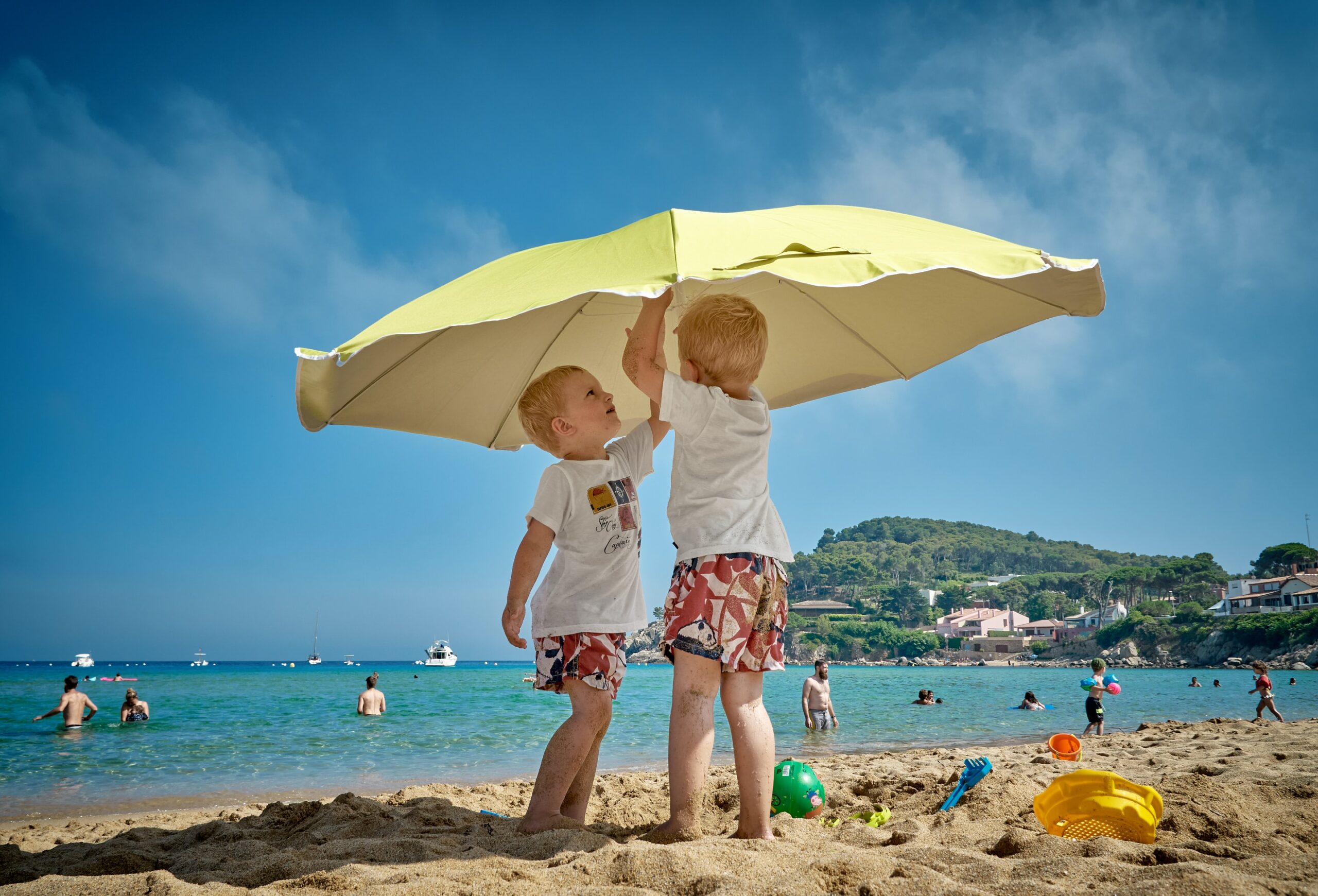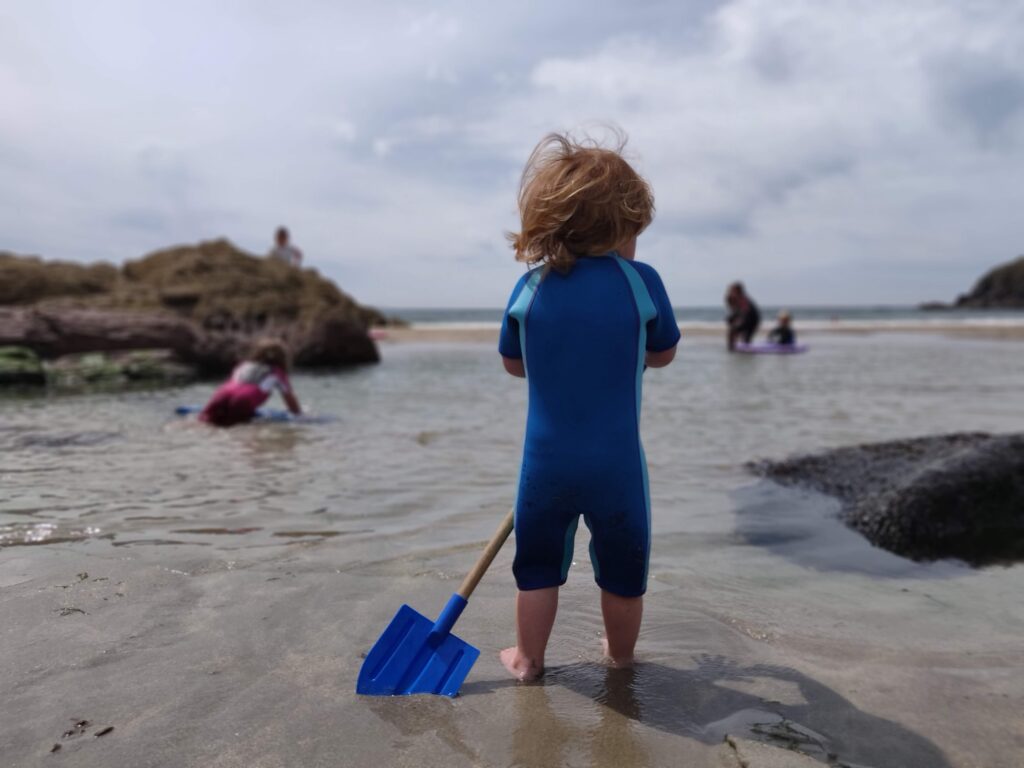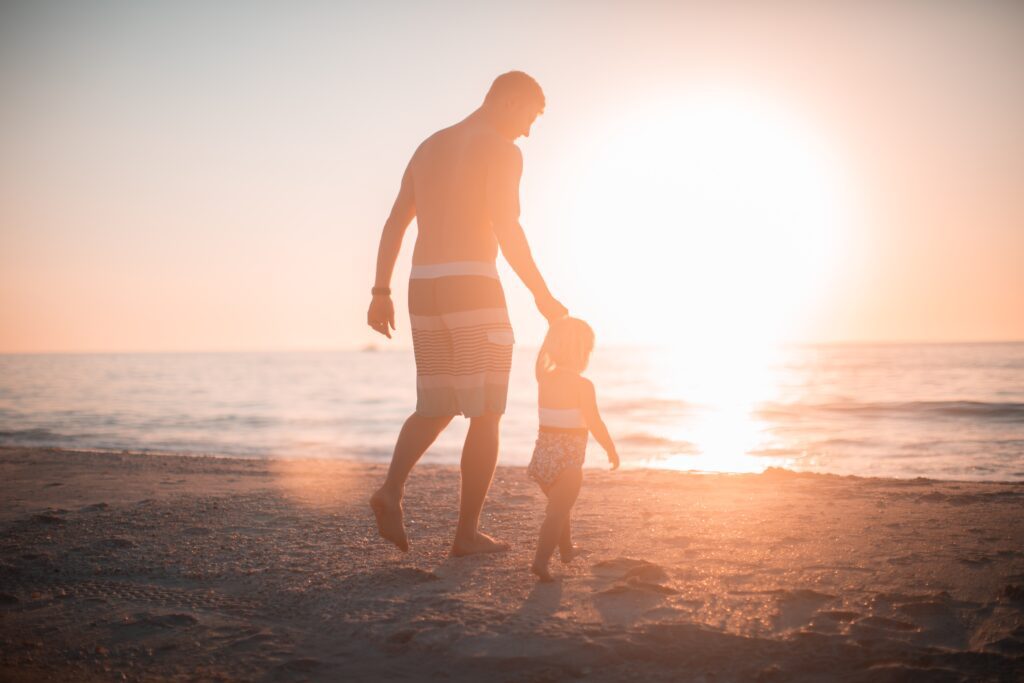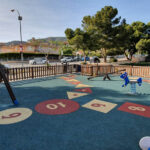
We are nearly half-way through the summer and in many places, including tourist destinations, the beach season is fully underway. One thing to consider as a parent is protecting your child from the harmful effect of the sun’s UV rays. One needs to understand that the sun is not bad per se. It is the best source of vitamin D, and it makes life on earth possible, and is also good for jolly spirits. So overall, this is certainly not a bad thing, however, a day at the beach with children can lead to more exposure to sun rays than is healthy. So for families that have younger children, a beach day requires a little more careful planning. Here are a few tips to consider, keeping your child safe in the sun.
Sunscreen
The first line of defense is sunscreen. One thing to note is that sunscreen is not sunscreen. They, too, come in different forms. When you select a sunscreen, look for one that is labeled “broad spectrum” which simply means that it protects against both UVA and UVB sun rays. UVA rays cause accelerated aging of the skin, and UVB is responsible for burning, however, both contribute to cancer as well. Most creams (or sprays) will contain a mix of chemicals to do the job, however, there are great alternatives which we’ll describe below. If your child has sensitive skin also make sure that the sunscreen is hypoallergenic and fragrance-free.
Another important factor in selecting sunscreen is the SPF, which stands for sun protection factor. The SPF is a measure in regard to the length of time the sunscreen will protect the skin from the sun’s UVB (burning) rays compared to how long it would take for the skin to burn without applying any sunscreen. In theory, if your child’s skin were out in the sun and normally reaches a “burning” point after 10 minutes without sunscreen, then an SPF of 30 would lengthen that to roughly 300 minutes. However, in practice, most people do not apply enough sunscreen to reach this significant amount of protection, so when you apply sunscreen to your child’s skin, be generous. Don’t make them snowman white, but be sure to apply a good amount. Also keep in mind that sunscreen should then be reapplied every two hours, even with water-resistant sunscreen. Not only does the sun shine down from above, but the water will reflect the sun’s rays as well.
Note: Sunscreens are typically categorized into mineral and chemical sunscreens, as we mentioned above. Some chemical sunscreens have been linked to reef deterioration and are potentially harmful to marine life, and generally, we want to avoid chemicals wherever possible, and albeit natural sunscreens may be more expensive you are doing yourself, your child, and the environment a favor. Stay clear of the following chemicals: oxybenzone, octinoxate, petrolatum (known as mineral oil), and titanium dioxide. As a general rule of thumb, the shorter the ingredients list, the better!
Sun Protective Clothing
The second layer of protection for children may be sun protection clothing. Reapplying sunscreen every two hours may not always be appealing, hence special clothing that covers much of their skin while still allowing freedom of movement and fun in the water may be a great addition and/or alternative to constant sunscreening.
There is a variety of sun-protective clothing available for children, often with 30+ or 50+ UPF (ultraviolet protection factor, which like SPF is a rating system for clothing to measure the fabrics’ ability to block UV rays. A UPF of 50+ translates to a UV radiation blockage of roughly 98%) that you can mix and match to fit your child as needed. The best types of fabric are soft, light, quick-drying, and comfortable and fit snugly so that there is no sliding around when wet.

Hats
While it may not necessarily have a UPF factor, a hat or cap is part of the outfit when it comes to beach days for children. Whether you opt for a wide brim or neck covering, choose a hat you as a parent feel is comfortable for your child, can get sandy and wet, and won’t fly away if a burst of wind comes. A hat covers the face and neck and protects the ears as well.
Sunglasses
Just as we parents wear sunglasses, it may be good for your child to protect their eyes from the sun. While not every child may like a pair of sunglasses sitting on their face at the beach playing, this is a personal choice as a parent. Young eyes are susceptible to damage, however, do not force anything onto your child. Again, common sense as parents is key. If you and your child choose to wear glasses (let them pick), then select child-sized sunglasses with 99.9% UVA and UVB protection or UV400 certification (which blocks out 99.9% of the aforementioned sun rays). If your child wears prescription glasses, then rather than getting separate glasses, use UV clip-on lenses as a good alternative.
Note: While protective clothing is great, using common sense will help keep your child safe. If it is windy, late in the day, or getting cold, you may want to take off the clothing while your child sits under the umbrella or plays in the sand, because a wet shirt and cold wind are not a great combination. Knowing when to wear protective clothing in combination with good sunscreen is key.
Parasol
There are a variety of ways to provide shade on the beach. Utilizing a classic parasol is one, and beach tents are another. However, if you plan on staying longer at the beach, then having a good parasol is essential. Investing in a good beach parasol that can last years is worth the money. Not only will a good parasol offer a place to cool off, but it is also a great place to put water and food away from direct sunlight. Good parasols will have a protective layer (UPF) on the inside (typically silver-like) as well. Cheap parasols are just made of fabric and are typically see-through.
An alternative to a parasol is a beach or travel tent. These can quickly be pitched up in the sand, and have a variety of ways to stay put, from utilizing bags and weight to small sandbags to pins placed into the sand and then covered with sand as well.
Drinking Water
Just having a dip in the water or a sip of a soft drink will not do. Everyone should know how important it is to stay hydrated in warm weather, especially if you are spending a long day out in the sun and on the beach.
The best way to do this for your child is to utilize a good water bottle. Nothing made of plastic, rather stainless steel. They are great because they can keep drinks cold for up to 48 hours and also are usable in the winter to keep drinks warm for up to 24 hours depending on the bottle type. The better the quality, the better the time it keeps drinks hot or cold. A great combination is to use a larger one for yourself and get a smaller one for your child. This is completely up to you, however, please stay away from plastic water bottles quickly bought on the way to the beach. These will warm up quickly and generate more trash than needed. And ultimately, investing in a proper bottle will be cheaper over the long run. If you do take plastic bottles (for whatever reason – say refilling), then please make sure to take them with you and dispose of them correctly. Never leave trash behind.

Additional Precautions
Beach days are always fun, and you as a parent know best how your child is or can get depending on the hour of the day, regarding energy levels, hungriness, etc. yet keep in mind that the suns rays are the strongest between 11:00 a.m. and 15:00 (03:00 p.m.) so try to minimize the time your child spends in the sun during those hours, especially babies and toddlers. This is because babies, typically 6 months and younger, have thinner skin and underdeveloped melanin, hence they should be kept in the shade at all times.
If your child needs medication, check to ensure that none of them causes increased sun sensitivity.
As mentioned above, utilizing a good sunscreen (50+), a parasol, or a tent, along with hydration and qualitative sun protective clothing will make a beach day perfect for your child. And, as always, an example by following basic sun safety measures as an adult. Sit under the parasol when needed, drink plenty of fluids and use sunscreen together with your child, and model the behavior for them. This way, your child will pick up good habits that will help protect them for years to come when visiting the beach.
We would love to know what else you do when it comes to sun safety. Do you have any tips for us to add to this? Comment below or contact us directly!









